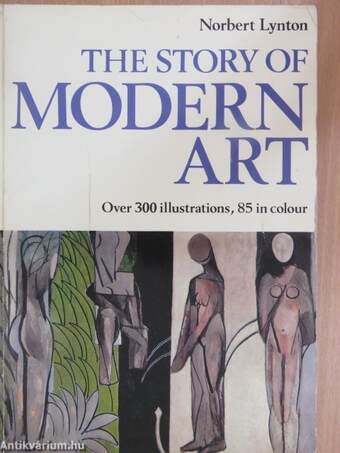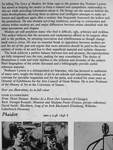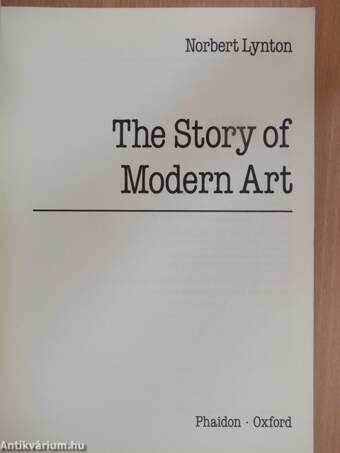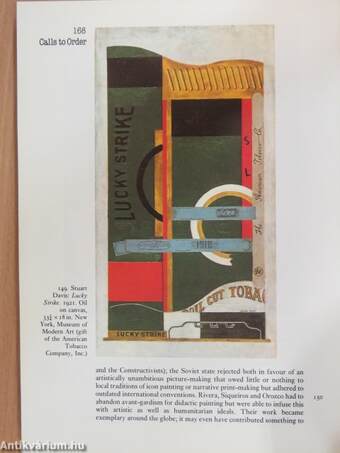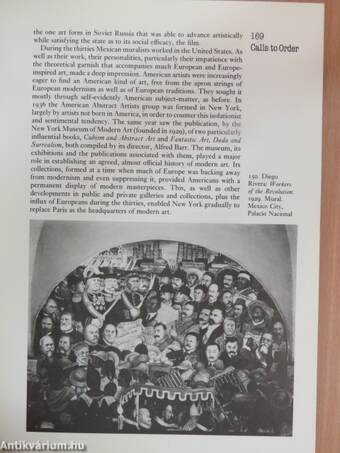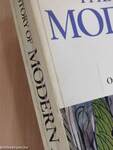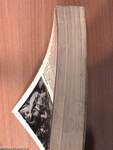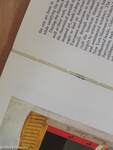1.062.071
kiadvánnyal nyújtjuk Magyarország legnagyobb antikvár könyv-kínálatát

VISSZA
A TETEJÉRE
JAVASLATOKÉszre-
vételek
The story of modern art
| Kiadó: | Phaidon Press Limited |
|---|---|
| Kiadás helye: | Oxford |
| Kiadás éve: | |
| Kötés típusa: | Fűzött papírkötés |
| Oldalszám: | 382 oldal |
| Sorozatcím: | |
| Kötetszám: | |
| Nyelv: | Angol |
| Méret: | 25 cm x 18 cm |
| ISBN: | 0-7148-1848-8 |
| Megjegyzés: | Fekete-fehér és színes fotókkal. |
naponta értesítjük a beérkező friss
kiadványokról
naponta értesítjük a beérkező friss
kiadványokról
Fülszöveg
In teliing The Story of Modern Art from 1900 to the present day Norbert Lynton has aimed at helping the reader to form a relaxed and sympathetic relationship to this art while providing information about it. He brings out the motives behínd the main developments, showing them as serious and intelligent attempts to make art honest and significant again after a century that frequently honoured the hollow and the pretentious. He alsó stresses surviving traditions, pointing to continuities and echoes within modern art, and major differences between artists ideiltified with the same movements and slogans.
Modern art still perplexes many who find it difficult, ugly, arbitrary and reckless. The author believes that the accounts and explanations offered in its support often add to the problem, by stressing innovation and rebelliousness as though change itself were a virtue. He sees no essential break or opposition between modern art and the art of the past and argues that more attention... Tovább
Fülszöveg
In teliing The Story of Modern Art from 1900 to the present day Norbert Lynton has aimed at helping the reader to form a relaxed and sympathetic relationship to this art while providing information about it. He brings out the motives behínd the main developments, showing them as serious and intelligent attempts to make art honest and significant again after a century that frequently honoured the hollow and the pretentious. He alsó stresses surviving traditions, pointing to continuities and echoes within modern art, and major differences between artists ideiltified with the same movements and slogans.
Modern art still perplexes many who find it difficult, ugly, arbitrary and reckless. The author believes that the accounts and explanations offered in its support often add to the problem, by stressing innovation and rebelliousness as though change itself were a virtue. He sees no essential break or opposition between modern art and the art of the past and argues that more attention should be paid to the inner content of works of art and less to their superficial material and stylistic character.
The book achieves a perfect balance between text and pictures; the reproductions are fully integrated into the text, making for easy consultation. The choice of illustrations is wide and truly testifies to the richness and diversity of the subject. Brief biographies of the artists discussed and a bibliography provide useful reference material.
Professor Lynton is a distinguished art histórián, who has lectured to audiences of many sorts, taught the history of art in art schools and universities, written art criticism for speciálist magazines and for the press, and worked for somé years as Director of Exhibitions for the Arts Council of Great Britain. He is now Professor of the History of Art at the University of Sussex.
Over 300 illustrations, 85 in full colour
COVER illustrations:
Front. Henri Matisse: Bathers hy a River (Art Institute of Chicago) Back. Georges Rouault: Monsieur and Madame Poulot (Francé, priváté collection) Dávid Smith: Blackburn, Song of an Irish Blacksmith (Duisburg, Wilhelm-Lehmbruck-Museum)
Phaidon ISBN 07148 1848 8 Vissza
Témakörök
- Idegennyelv > Idegennyelvű könyvek > Angol > Művészetek > Művészettörténet, általános
- Művészetek > Művészettörténet általános > Idegen nyelv > Angol
- Művészetek > Művészettörténet általános > Művészettörténet > Külföldi
- Művészetek > Művészettörténet általános > Korszakok, stílusok > XX. század > Avantgard
- Művészetek > Művészettörténet általános > Korszakok, stílusok > XX. század > Egyéb
- Művészetek > Művészettörténet általános > Összefoglalók > Nemzetközi > Egyéb



